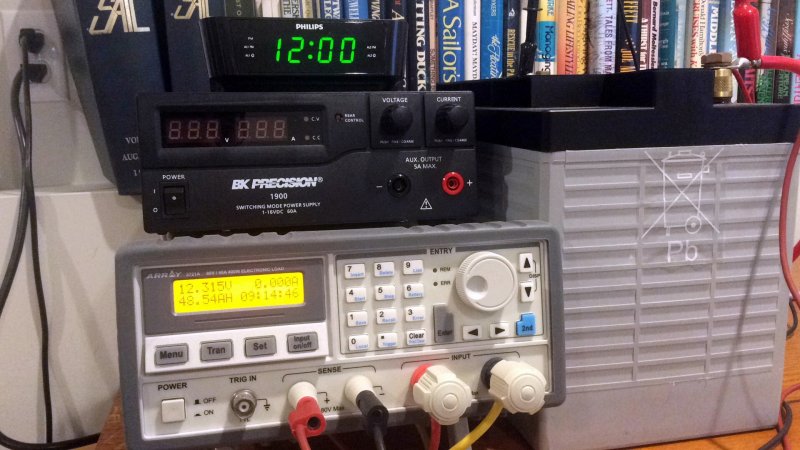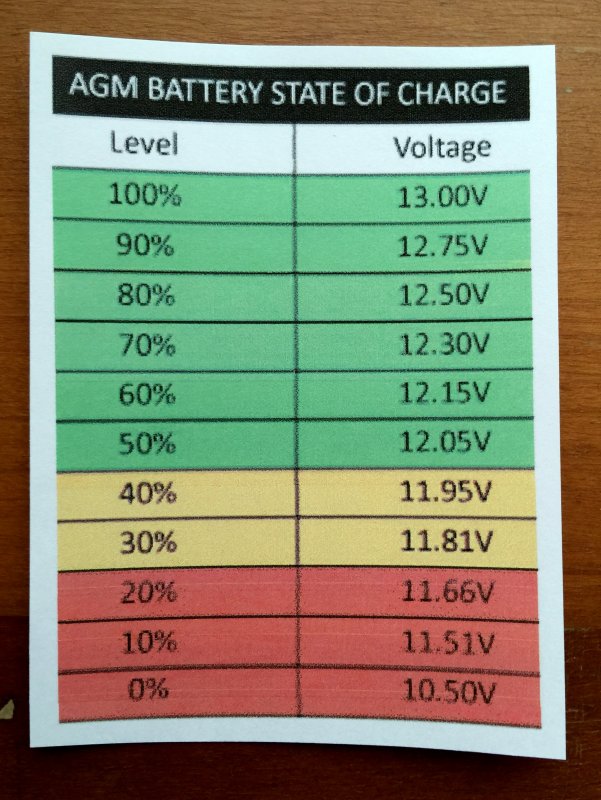Greetings,
I have a couple of 110 Ah wet batteries as my house bank and a group 24 starting battery, wired using the 1-2-BOTH-OFF switch per Maine Sail's scheme.
I'd like to add house capacity, and I have a good pair of 80 Ah AGM batteries.
How can I do this? I was thinking of splitting loads and running house loads like fridge, lights, stereo, etc., off one bank, and instruments, autopilot, radar, etc., off the other.
For charging, the recommended voltages are pretty darn close, so I assumed I'd add an ACR.
It would also be nice to be able to switch banks to loads in case there's a bank fault, similarly to the 1-2-BOTH-OFF scheme above.
Input most welcome.
Thanks,
jv
I have a couple of 110 Ah wet batteries as my house bank and a group 24 starting battery, wired using the 1-2-BOTH-OFF switch per Maine Sail's scheme.
I'd like to add house capacity, and I have a good pair of 80 Ah AGM batteries.
How can I do this? I was thinking of splitting loads and running house loads like fridge, lights, stereo, etc., off one bank, and instruments, autopilot, radar, etc., off the other.
For charging, the recommended voltages are pretty darn close, so I assumed I'd add an ACR.
It would also be nice to be able to switch banks to loads in case there's a bank fault, similarly to the 1-2-BOTH-OFF scheme above.
Input most welcome.
Thanks,
jv


